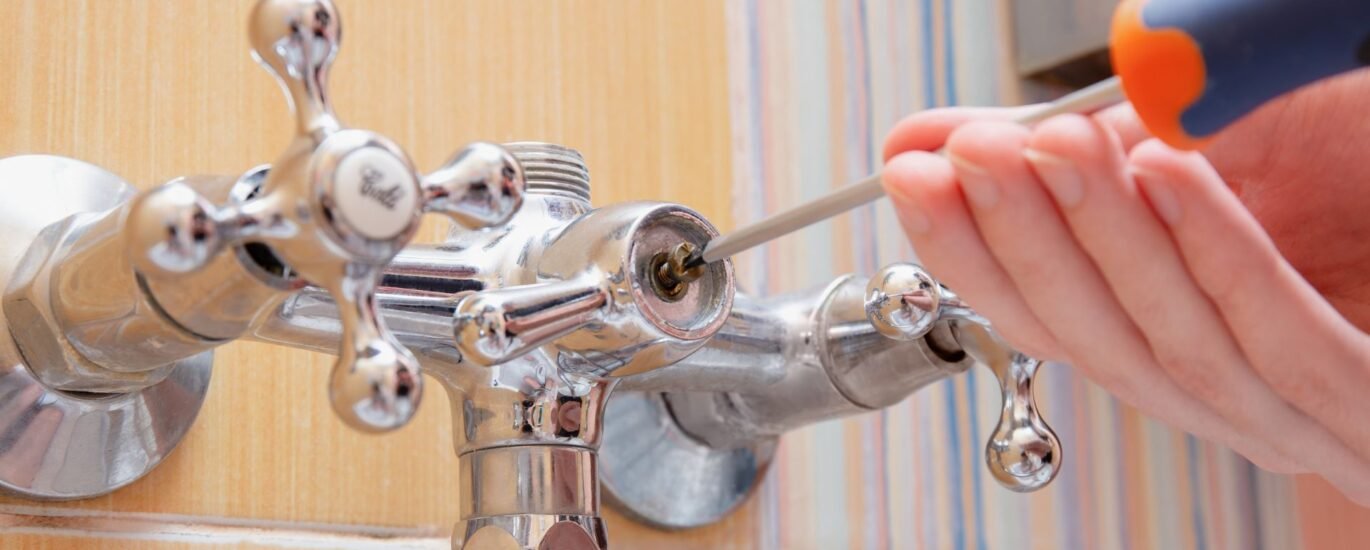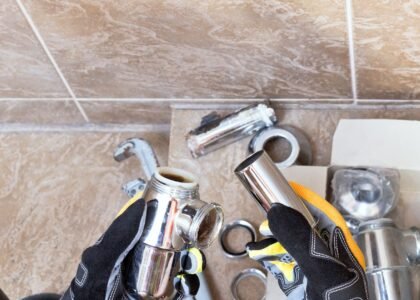Leaky faucets, low water pressure, or strange noises — if you’re a homeowner, you’ve likely dealt with at least one of these issues. While they might seem small, ignoring them can lead to water waste, higher bills, and even hidden plumbing damage.
Whether it’s a slow drip in your bathroom or a squeaky kitchen handle, knowing how to identify and address faucet issues early can save you time and money. In this post, we’ll explore seven common faucet problems, when to handle them yourself, and when to call a professional for faucet repair.
Why Faucet Issues Should Never Be Ignored
A faulty faucet might not seem urgent, but it can have lasting consequences. Here’s what happens when small leaks are left unattended:
- Wasted Water: A single dripping faucet can waste hundreds of gallons per year.
- Rising Water Bills: Even a slow leak adds up over time.
- Mold and Mildew Growth: Moisture buildup around sinks and counters encourages mold.
- Corrosion: Metal parts can rust, weakening the faucet structure.
- Reduced Water Pressure: Leaks often point to blockages or pipe issues that can worsen.
Fixing issues early keeps your home efficient and your plumbing system healthy.
1. The Constant Drip: Why Faucets Leak
A dripping faucet is the most common problem — and one of the most annoying. You may hear the steady plink in the middle of the night, but what’s actually causing it?
Common Causes:
- Worn-out washers or O-rings
- Corroded valve seats
- Improper installation
- High water pressure
Quick Fix:
If you’re handy, turn off the water supply, disassemble the faucet, and check for worn parts. Replace any washers or seals showing cracks or deterioration. If the drip persists, visit Pro Plumber’s Faucet Repair page to schedule a professional inspection.
2. Low Water Pressure
Low pressure in your kitchen or bathroom faucet can make rinsing dishes or washing hands frustrating.
What’s Causing It:
- Mineral buildup in the aerator
- Clogged cartridge
- Corroded pipes
- Hidden leaks in the plumbing system
Solution:
Unscrew the aerator from the faucet tip and soak it in white vinegar for 30 minutes to dissolve mineral deposits. If pressure doesn’t improve, it could indicate a deeper issue with your plumbing that requires expert diagnosis.
3. Handle Problems: Stiff, Loose, or Squeaky
When your faucet handle squeaks or feels stiff, it’s not just inconvenient — it’s often a sign that parts are wearing down or need lubrication.
Causes:
- Sediment buildup
- Worn cartridge or stem
- Corrosion within the handle assembly
What to Do:
Apply plumber’s grease to the handle’s moving parts after cleaning them. For persistent issues, replacing the cartridge or handle assembly might be necessary. Professional plumbers can identify exactly which part needs repair without risking further damage.
4. Leaks Around the Base of the Faucet
If you notice water pooling at the bottom of your faucet or around the countertop, the problem might not be the spout — it’s usually a seal issue.
Causes:
- Damaged O-rings
- Loose nuts or washers under the sink
- Worn cartridge or gasket
Why It’s Serious:
Base leaks can lead to hidden water damage under the sink, ruining cabinets and flooring.
If tightening fittings doesn’t stop the leak, contact a professional plumber through our Contact Us page to prevent long-term damage.
5. Noisy Faucets
Hearing rattling, screeching, or knocking noises when you turn on the faucet? That’s your plumbing system sending a signal.
Common Sounds and Causes:
- Whistling: A worn rubber washer or loose screw
- Squealing: Worn parts in the faucet stem
- Hammering: Water pressure issues or air trapped in pipes
A plumber can inspect your water lines to determine if pressure adjustments or new parts are needed. Ignoring these noises may lead to burst pipes or more expensive repairs.
6. Rust or Discoloration
Rust around your faucet or brownish water from the tap is more than a cosmetic issue — it could indicate corrosion inside your plumbing.
Potential Causes:
- Aged faucet components
- Corroded internal pipes
- Mineral-rich water (hard water)
What to Do:
You can try cleaning the faucet surface with baking soda and vinegar, but internal corrosion usually requires professional help. In some cases, it’s best to replace the faucet entirely to prevent contamination.
7. Faucet Sprayer Malfunction
Kitchen sink sprayers can become weak, uneven, or completely clogged over time.
Causes:
- Mineral buildup in the spray head
- Twisted or kinked hose
- Faulty diverter valve
Solution:
Soak the spray head in vinegar to clear mineral deposits and ensure the hose isn’t pinched. If that doesn’t help, the diverter valve may need replacement — something a professional plumber can handle efficiently.
When DIY Isn’t Enough: Call in the Experts
DIY repairs can be rewarding, but some problems are better left to professionals. Consider calling an expert if:
- You’ve replaced parts and the faucet still leaks
- There’s visible water damage under the sink
- Your faucet is an expensive or specialty model
- You hear loud banging or whistling when using the faucet
Professional plumbers have specialized tools to accurately diagnose and fix problems without damaging your fixtures. They can also check for hidden leaks that might not be visible to the eye.
To schedule a professional inspection, visit our Contact Us page today.
Preventing Faucet Issues Before They Start
The best faucet repair strategy is prevention. Follow these maintenance habits to keep your faucets running smoothly:
- Clean Aerators Monthly: Prevents mineral buildup that affects water pressure.
- Avoid Over-Tightening: Turning handles too tightly wears out seals faster.
- Inspect for Leaks: Check around the base and handles regularly.
- Use a Water Softener: Helps prevent corrosion and mineral scaling.
- Schedule Routine Plumbing Maintenance: A yearly inspection can catch issues early.
For more preventive tips and expert faucet care, explore our Faucet Repair Services page.
Why Homeowners Choose Professional Faucet Repair Services
When you hire a plumber for faucet repair, you’re not just fixing a leak — you’re investing in long-term home maintenance.
Here’s what professional service offers:
- Precision Diagnosis: Experts identify the exact source of the issue.
- Proper Tools and Materials: Ensures a lasting, secure repair.
- Time Savings: No more guesswork or repeated trips to the hardware store.
- Improved Efficiency: A properly repaired faucet saves water and reduces bills.
Whether it’s a small drip or a major leak, professional repair services keep your home plumbing reliable and efficient.
Final Thoughts
Your faucet is one of the most frequently used fixtures in your home — and when it’s not working properly, it affects your daily routine. By recognizing early warning signs and acting quickly, you can prevent minor issues from turning into costly plumbing emergencies.
If your faucet is leaking, squeaking, or showing signs of wear, don’t wait until the problem gets worse. Visit our Faucet Repair page for expert help, or Contact Us today to schedule a service appointment.



